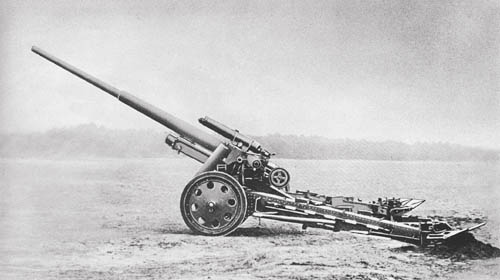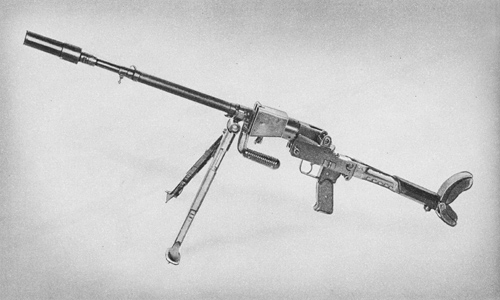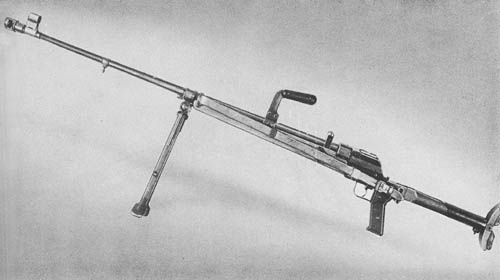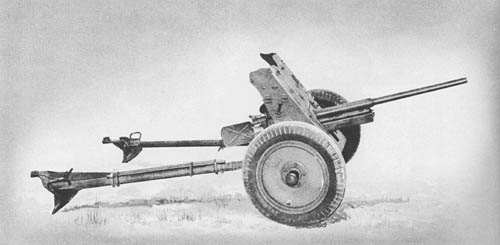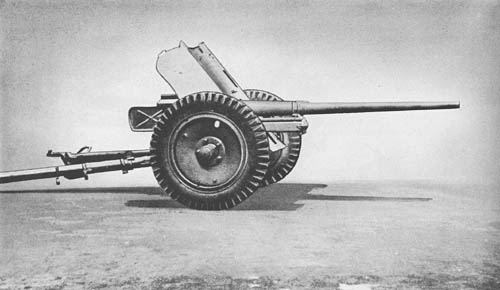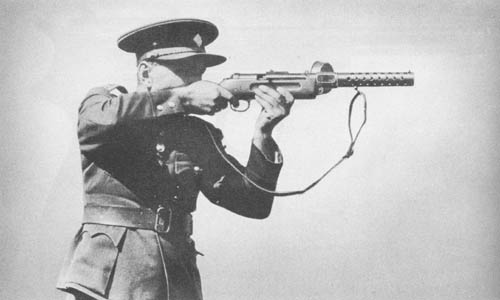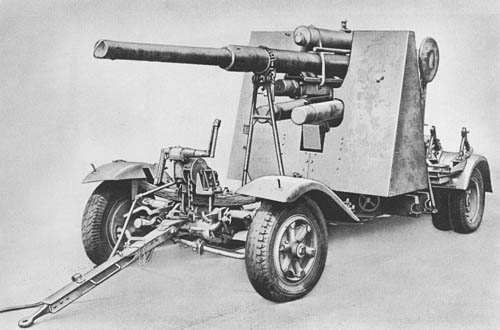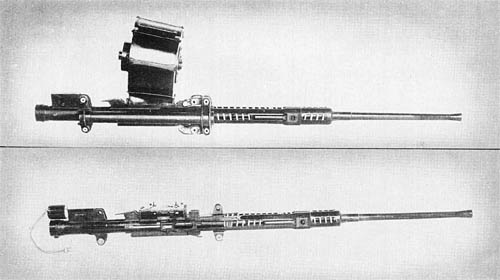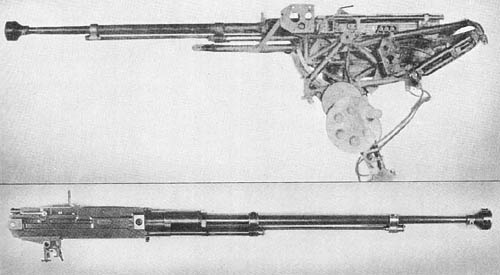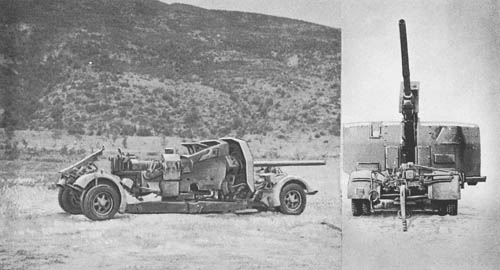
This new German multi-purpose 8.8 cm gun is built on massive proportions. The piece, which has an overall length of approximately 262 inches, has a built-up tube with a securing collar at the forward end of the jacket.
A breech mechanism of the horizontal sliding type is operated manually by a handle on top of the breech ring; it may also be operated semi-automatically, opening action and extraction taking place during counter-recoil, and closing action following when a round is rammed home.
The hydropneumatic recuperator cylinder is fitted above the barrel; and the buffer is in the cradle. A lug riding in a cam below the left trunnion is geared to rotate the control rod, varying the length of recoil with the elevation. Spring equilibrators are located on either side of the upper carriage.
The elevating mechanism is of the single rack and pinion type. Three elevation speeds are provided and selected by positioning a lever on top of the gear box to which the handwheels are fitted. Three traverse speeds are also provided and selected in the same manner as the elevation speeds.
The cannoneer has the choice of two sitting positions. For direct fire he sits facing the front and fires the gun by pressing an electric push-button with his right foot. The left foot rest, when not depressed, brakes the traverse. When sitting in the antiaircraft position, the cannoneer faces the side of the gun and matches pointers. Here again the left foot rest is a brake pedal, braking the traverse when released. The gun has a total traverse of 360°. The gun crew is protected by a shield 5/16 inch thick and 7 feet, 3 inches high. Both steel casing and normal casing shells are used.
SPECIFICATIONS
| Caliber | 8.8 cm | |
| Length of tube | 248 ins. | |
| Weight (travelling position) | 12.3 tons | |
| Weight (firing position) | 8.8 tons | |
| Length (travelling position) | 30 ft., 8 ins. | |
| Height (travelling position) | 7 ft., 6 ins. | |
| Height (firing position) | 50 ins. | |
| Width (overall) | 94 ins. | |
| Length of tube and breech ring | 8.8 ft. | |
| No. of grooves | 32 lands and grooves, R.H. twist | |
| Width of grooves | .110 ins. | |
| Depth of grooves | .038 ins. | |
| Width of lands | .242 ins. | |
| Muzzle velocity (H.E. shell) | (3,280 f.s.); (A.P. 3,215 f.s.) | |
| Max. range (horizontal) | 21,960 yds. | |
| Max. range (vertical) | 16,075 yds. | |
| Rate of fire | 20-25 rds. per minute | |
| Traverse | 360° | |
| Elevation | +90° | |
| Depression | -3° | |
| Length of recoil | ||
| Ammunition | H.E. (3 types of A.P.) | |
| Wt. of projectile | H.E. 20.7 lb.; A.P. 22.4 lb. |
German: p. 112
